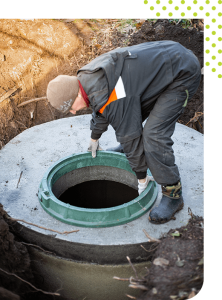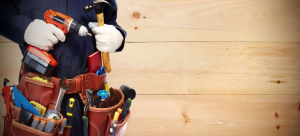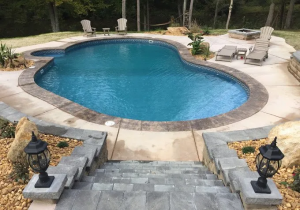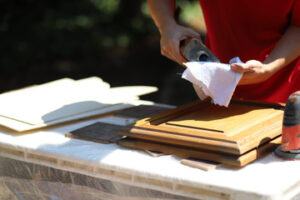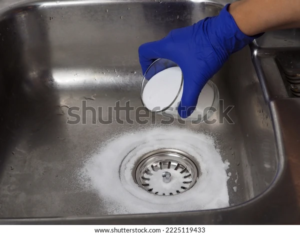Mold Removal Salt Lake City is the process of killing and cleaning surfaces that are affected by fungus. It is usually done with standard bleach, or a less harsh alternative like straight vinegar.
If the fungus is deeply rooted in materials, then it will likely require professional removal and replacement. Remediation also involves drying and ventilating the space.

The most common causes of mold are water leaks, poor ventilation, and overly humid conditions. If these problems are not addressed quickly, a property is at risk of major damage. Mold can be extremely damaging to wood structures, such as floor boards, walls, and even the ceiling and foundation of a home or building. It is also a serious health concern and can affect anyone who breathes in the spores, regardless of their immune system.
Those who have weak immune systems are at a higher risk of infection from living mold, as well as from fungi that have died but are still in the air. Infections are typically mild, but severe cases can result in fever and breathing difficulties. Some types of fungi can also produce poisons known as aflatoxins, which are found in some plants and pose a health risk to workers who harvest and process the crops.
Mold spores and other parts of the mold must be removed completely before a person can be considered safe. Spraying a surface with disinfectants or biocides will not remove these contaminants and will still cause a reaction in people who are sensitive to them.
Any porous materials that have absorbed the mold growth should be bagged and thrown away. This includes sheet rock, insulation, plaster, carpet/carpet pad, and paper products. Any items that have contacted sewage should also be bagged and discarded. Non-porous materials such as hard plastic, concrete, metals and solid wood that have surface mold growth may be saved if they are thoroughly cleaned.
Before beginning work, it is important to identify and fix the moisture problem that caused the excessive mold growth in the first place. Moisture must be reduced below 50% in order to prevent future mold growth. Otherwise, cleaning will only be a temporary measure and the mold will return.
After all surfaces have been cleaned, it is a good idea to use bleach to kill any remaining mold spores and fungi. Always wear gloves and eye protection when handling bleach, and only do this in a well-ventilated area.
Symptoms
Molds produce volatile organic compounds (VOCs) that are emitted into the air as gases. When these VOCs are released, they can trigger asthma and other respiratory issues. They can also irritate the skin and eyes. Some of these volatile compounds have strong, unpleasant odors. Symptoms that may indicate a problem with mold include coughing and wheezing. A musty or earthy odor is another common sign of mold. The type of mold that is growing can also affect the symptoms. For example, black mold (Stachybotrys chartarum) is known to produce mycotoxins, which can be toxic and cause serious health problems.
Short-term effects of mold exposure can include allergic reactions, such as rashes and itchy eyes, according to Healthline. These allergies are usually triggered by breathing in mold spores, but they can also be caused by toxins produced by some types of mold. Long-term or repeated exposure to molds can lead to a condition called microbial volatile organic syndrome, which is also known as mycotoxicosis. This is a complex disorder that can affect multiple organ systems.
The first step in addressing black mold is to remove the affected items and clean the area. Mold can be removed from non-porous surfaces by washing them with hot water and detergent. For porous or absorbent items such as drywall and carpeting, it is best to use a commercial mold cleaner with a deodorizer. Once the mold has been removed, it is important to dry the area thoroughly and improve ventilation with a fan.
If you think you are experiencing symptoms of mold exposure, it is important to see a doctor right away. They can prescribe an antifungal medication to help with your symptoms. If you have a history of respiratory or eye irritation, it is best to avoid contaminated areas until they are cleaned. If you have to work in an area that is prone to mold growth, make sure the space is well ventilated and use plastic sheeting to separate it from other spaces. Also, it is a good idea to wear protective gear such as respirators.
Treatment
Mold removal is generally performed by a mold remediation specialist. This process includes drying wet materials and cleaning and disinfecting surfaces. It also involves identifying and correcting the moisture source that caused mold to grow. It may be necessary to use a disinfectant such as bleach (diluted with water).
Porous building materials such as drywall, carpeting and insulation must usually be discarded if they are visibly contaminated with mold. Non-porous materials such as metals, glass and hard plastics that are structurally sound can often be cleaned and reused. In some cases, non-porous materials that have been contaminated with sewage must be double-bagged and discarded as hazardous waste. Depending on the extent of the mold growth, large items such as furniture may need to be removed and disposed of. All contaminated material should be contained in a containment area and sealed before removal from the work area.
During the cleaning and disinfection process, all visible mold growth is scrubbed using a stiff brush, hot water and household detergent or commercial cleaner. During this step, it is important to wear rubber gloves, safety goggles and face mask to limit exposure to spores. After the physical mold growth is scrubbed away, a disinfectant such as bleach (diluted 1 cup of bleach to 1 gallon of water) is used to kill any remaining spores.
This step should be followed by a thorough rinse with clean water. The contaminated area is then allowed to dry completely. The time it takes for this to occur varies by temperature and humidity, but it is important that all areas be dry before continuing with the restoration process.
After all contaminated material has been removed and all contaminated areas have been rinsed, the work area should be ventilated by opening windows and doors. If necessary, fans can be used to speed up the drying process.
If symptoms persist, consult a medical professional. Prolonged exposure to some types of mold, such as Cladosporium and Stachybotrys chartarum, can cause asthma, rashes and other health problems. People with weak immune systems or who have had a recent serious illness, such as an infection or surgery, may have more severe reactions to mold.
Prevention
When a mold problem arises, it’s vital that the moisture source be identified and eliminated to prevent future growth. A professional home restoration company can help you determine the source of the moisture and make recommendations on how to fix it. In many cases, mold damage can be covered by your insurance policy if the cause of the mold is determined to be from a covered peril.
Mold is most commonly found in areas where there has been water or sewage damage. These areas should be cleaned as soon as possible to avoid the spread of mold spores throughout the house. Ideally, wet materials should be dried within 24 to 48 hours to prevent mold from growing in porous areas such as carpeting, wallboard and insulation. Depending on the level of the mold growth, these materials may need to be removed and discarded. Non-porous surfaces such as metals, glass and hard plastics can be cleaned and reused.
Using a wet/dry vac, dehumidifier and fans to dry wet materials as quickly as possible is essential in the prevention of mold. Once the area is completely dry, the mold removal process can begin. After all contaminated material is removed and the surface has been thoroughly scrubbed and vacuumed, the area is then sprayed with biocide to prevent any new mold spores from growing in the future.
In most cases, non-porous surfaces can be cleaned with detergent solutions and hot water. Porous materials that are visibly impacted with mold, such as carpeting, drywall and insulation should be bagged and disposed of in order to prevent the spread of the mold spores through the air.
It is important to use an experienced, certified mold remediation technician to ensure that the job is done correctly. The technicians at a reputable restoration service should follow standards set by the EPA, American Conference of Governmental Industrial Hygienists and Institute of Inspection, Cleaning and Restoration Certification. Many states require that mold remediation contractors be licensed in order to provide these services.
It is also a good idea to keep humidity levels in your home below 60 percent, as this can further prevent mold from growing and reduce the risk of health problems. Using a hygrometer can help you monitor indoor humidity and take corrective action if it goes above the recommended level.
